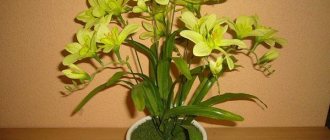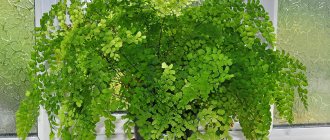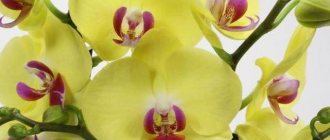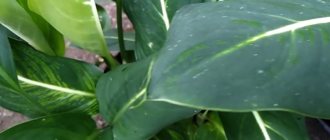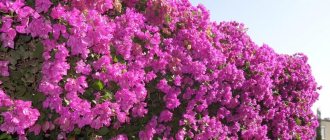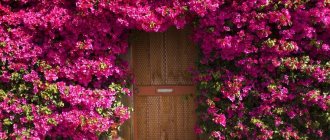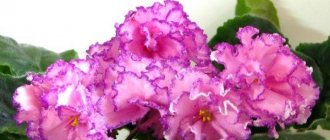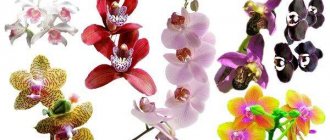- August 21, 2018
- Flowers
- Anastasia Efremenkova
The alyssum flower is a member of the Brassica family. There are about one hundred species of this plant in the world. Their homeland is considered to be North Africa, Asia and Europe. Alyssum entered the culture relatively recently, but in a short period it managed to gain popularity, which is increasing every year. There are quite a few reasons for this: unpretentiousness, ease of care, as well as a pleasant honey aroma that spreads throughout the area where this plant is located. The article will discuss all the features of growing alyssum, photos of the plant, some recommendations from experienced gardeners and much more.
Description of alyssum
Alyssum is one of the low-growing plants because it does not extend more than forty centimeters. Its shoots are highly branched and semi-lignified, the leaves grow quite densely and have an oblong or obovate shape. The flowers are quite small, but collected in beautiful inflorescences in the form of brushes. They have a wide variety of shades: white, lilac, red, violet, yellow and many others. Flowering begins around the end of May and continues until autumn. Alyssum also has fruits that are presented in the form of a pod with seeds inside. Planting material can be stored for no more than three years, since after this time the seeds lose their viability.
Alyssum is one of the honey plants, since not a single bee can fly past its honey aroma. Flower growers have long combined this plant into one genus with marine lobularia, although these are two completely different plants. Alyssum is represented by both annual and perennial plants. These flowers can be planted in flower beds directly in the open ground, or they can be planted in flowerpots or flowerpots.
Reproduction methods
Vegetative and generative propagation options are suitable for ampelous alyssum. In the first case, cuttings taken from the tops of shoots before flowering serve as planting material. They are placed in greenhouse conditions or planted directly in a flower bed, covered with cut plastic bottles.
In subtropical climates, if alyssum is grown as a perennial, the variety can be propagated by dividing a three-year-old mother bush.
Attention! The vegetative method is rarely used; more often, ampelous alyssum is propagated generatively.
Seeds are collected at the end of September, they are used for growing seedlings or sown in the ground in spring
Growing ampelous alyssum from seeds
In order for the ampelous alyssum to bloom earlier in the flowerbed, you can pre-grow seedlings. In March, fill containers or wooden boxes with sides no higher than 15–20 cm with nutritious soil consisting of compost, peat and soil, or purchase a ready-made mixture for flowering plants.
Small furrows are made on the surface and seeds are sown randomly, lightly sprinkled, and watered. Alyssum planting material will germinate in 8–10 days. The container with seedlings is placed in a lighted room and the temperature is maintained at 15–20 0C. Before transplanting, water the plant so that the soil is constantly moist. A week before placing them in the flower bed, the seedlings are hardened off, gradually lowering the temperature to street temperature.
Advice! If you plan to grow ampelous alyssum on the balcony, sow it directly into pots or boxes. After germination, thin out and remove weak, poorly developed plants.
Growing alyssum from seeds
When to plant alyssum and in what conditions should this flower grow? Many, especially novice flower growers, are concerned about this issue. You can choose seedling and non-seedling methods of growing alyssum. As for the second method, the seeds are planted directly in open ground. It is best to do this in early May. The seeds are deepened 1.5 centimeters into the soil. Seedlings usually appear in the form of a continuous carpet throughout the entire bed. But you can’t leave them in this form; you should straighten them out, removing the smallest and weakest shoots. However, it is worth considering that flowers planted at such a time will bloom later than others.
Experienced gardeners recommend trying planting alyssum seeds before winter. Sowing is carried out towards the end of November, when the air temperature will no longer rise and there is no risk that the seeds will begin to germinate. It is believed that it is better to plant alyssum at this time, since in winter they can undergo stratification. This will have a positive effect on the strength of future seedlings, and will also allow them to bloom in a timely manner.
Forum, reviews: what does gardening experience tell you about?
Beginners and seasoned gardeners alike report success and ease in growing charming annual crops. Most often, even perennials are cultivated for one season, since climatic conditions do not allow them to winter safely. But this fact does not upset flora lovers at all, because acquiring new specimens is not difficult.
Alyssum planting and care, various photos of beautiful plants together bring only the most pleasant troubles and aesthetic pleasure, which will be confirmed by almost every lover of fragrant flowers.
Alyssum seedlings: when to plant?
Growing alyssum from seeds into seedlings is a more popular way of propagating it. This is due to the fact that it is more reliable. Before planting seeds, which takes place at the end of March or beginning of April, you should purchase special soil (lime content - pH 5.5-6.2). The soil mixture is filled into a container in which seeds for seedlings will later be germinated. Planting material is laid out directly on the surface of the soil. Do not place the seeds too close to each other. They must be sprinkled with loose soil of the same composition on top. But, if you wish, you can simply press the seeds with your palm to the ground, and this will be quite enough.
The box with seeds must be placed in a bright room with an air temperature of 10 to 15 degrees. Cover the container with thick film or glass to create a greenhouse effect. Remember to remove the cover daily to remove condensation and air out the seeds. If you create conditions according to the specified recommendations, the first shoots will begin to appear within the first week after planting.
Monitor the moment when the first true leaves begin to appear. During this period, the first complex fertilizers should be applied. Seedlings can be picked only after they have at least 3 true leaves. Seedlings are not always planted in separate pots. Under favorable conditions they can develop quite quickly. In this case, it will be possible to plant them directly in open ground.
How and when to collect your seeds
Alyssum seeds are very small and difficult to collect. However, if you follow the recommendations, the collection will be successful:
- The best time to collect seeds is the end of September.
- A windless day is needed so that the seeds do not scatter, and dry.
- The lashes of the flower are carefully lifted, and a cloth or film is spread under them.
- The inflorescences are rubbed by hand, all the contents are poured onto the substrate.
- The entire resulting mixture is dried, sifted to separate the seeds from the husk, and placed in a canvas bag.
Landing in the ground
Seedlings obtained from seeds can be planted in open ground towards the end of May, when night frosts no longer occur outside. Consider your landing location in advance. There should be soil with a neutral reaction, a high humus content and a good drainage layer. The place for planting seedlings should be sunny, but without direct sunlight. If there is no neutral soil on the site, then slightly alkaline or slightly acidic soil is quite suitable.
Alyssum in landscape design
One of the main features of alyssum is its pleasant and persistent aroma, so it is good to plant this plant closer to the windows of the house. The color spectrum of lobularia is quite wide: from white and yellow to pink, lilac and purple.
An advantageous combination can be obtained if the plant is planted between rose bushes or in alternation with annual dahlias. Alyssum looks great at the “foot” of perennial phlox and lilies, or in container planting with pelargoniums. Lilac and white lobularia will effectively complement flower beds with marigolds, snapdragons and lavatera.
Lobularia looks great in borders, cracks in paths or as a decoration for an alpine slide or rock garden. It is also good to grow it in hanging baskets and on balconies. This plant is often used to fill voids in flower beds and when decorating carpet flower beds or mixborders.
Technology of planting seedlings
Each gardener, when planting alyssum seedlings in the ground, must take into account that the flower quickly fills the area. Therefore, the conditions for growing alyssum require a large area. Seedlings should be placed at a distance of forty centimeters from each other. However, the chosen variety and type of plant should also be taken into account. It is necessary to prepare holes for seedlings in advance. Their size should be slightly larger than the size of the rhizome. You should not plant alyssum too deeply, and immediately after planting you need to water it abundantly. If the bushes have grown greatly in the pot, then they can be divided into several holes. The first flowering from seedlings grown from seeds can be expected within six weeks after sowing.
Secrets of cultivation
As you can see, growing seedlings from seeds and then planting them in open ground is not at all difficult. Caring for alyssum is just as simple. Here it is enough just to water the plant on time, periodically loosen the soil in the root zone, remove weeds, prune and apply fertilizers as necessary.
The plant must be watered regularly, and if the season is particularly dry, more liquid will be needed than usual. If the alyssum does not have enough moisture, it can shed all its existing buds and flowers. But before carrying out heavy watering, you should make sure that the soil has good water permeability. If it is at a low level, then water will stagnate in the roots of the plant, which will lead to rotting and then death of the plant.
It is important to note that growing alyssum at home is not possible. This is primarily due to the fact that it is quite large in size. However, if you wish, you can conduct such an experiment.
How to properly care for Alyssum
Proper care of seedlings is the first step to getting a large and beautiful plant. If this is your goal, then read the following steps carefully and follow the rules.
Top dressing
This plant does not need any special fertilizers; it is enough to apply regular store-bought fertilizers once every two weeks.
When 2-3 true leaves appear, the alyssium is planted in separate cups. The soil should not dry out during this period and should be constantly moist.
Watering
Watering must be done from a sprayer. After the first shoots appear, try not to get it on the stems, pour only on the roots.
How to prolong flowering
The flowering of a plant can be extended only if all the rules are followed. That is, it needs to be watered and fertilized in a timely manner, and you also need to loosen the soil and remove weeds.
Rules for picking Alyssum
When picking alyssum, you must act extremely carefully to minimize any risks. The following rules must be used:
- A few hours before the procedure, moisten the soil generously.
- If you plant in a common container, then the distance between plants should not be less than 2-3 cm.
- After the procedure, do not forget to water the plant.
Alyssum seedlings
How do you know when it's time to water?
To be sure that alyssum needs watering, you need to lightly dig the soil (no more than 3-4 centimeters). If the soil at this depth is dry, then you can safely start moistening. After watering, the soil becomes soft and it is much easier to remove weeds. When the soil dries out a little, you should loosen it to ensure the supply of oxygen to the roots.
Those gardeners who have laid a layer of mulch in the root zone should know that the plant will have to be watered much less frequently, and it will practically not need weeding. However, loosening in this case is not canceled. Because the permeability of water and air to the root system depends on it.
How to prolong flowering
In order to achieve the longest and most continuous flowering period, it is necessary to arrange pruning with the complete removal of elongated, dried inflorescences. All shoots are shortened by 5 cm. Seasonal autumn and spring pruning is also carried out, which helps gardeners obtain abundant color over time.
Alyssum after flowering: how and when to collect alyssum seeds
Lobularia seed collection begins in the third decade of September and early October. It is advisable to choose calm, dry weather to ensure complete collection and not lose seeds. In your garden plot or courtyard, you need to lay out a towel or blanket onto which to manually grind the inflorescences.
Large husks are removed upon completion, the seed material is thoroughly dried in a well-ventilated area, after which it is placed in bags made of natural fabric and stored in a dark and dry place. If the gardener is late in collecting the seeds and they have time to fall off, it is necessary to carefully sweep the seed material from under the branches and select the necessary specimens.
Fertilizers
While growing alissum, caring for it involves regular pruning. When alyssum begins to grow its green mass, it needs to be fertilized with nitrogen fertilizers. The fertilizer is prepared according to the following scheme: one tablespoon of Agricola-7 combined with urea is diluted in ten liters of water. When buds form on the flowers, complex fertilizer should be applied. If you apply fertilizers in a timely manner and in the required quantities, the alyssum will bloom without interruption until late autumn.
It is important to take into account that it is more often necessary to feed annual species. They need to be fertilized four times throughout the season. The first is applied immediately before flowering.
Trimming procedure
In order for alyssum to grow and develop freely in your garden bed, it is necessary to prune the plant in a timely manner. If perennial alyssums grow on the site, then with the arrival of spring it is necessary to remove last year's flower stalks, as well as damaged and diseased shoots and dried leaves. The same procedure is carried out immediately after the end of the flowering period. At this time, you should also shorten all shoots by eight centimeters. This may also encourage the alyssum to bloom a second time. Moreover, as mentioned earlier, this plant grows quite a lot, and thanks to pruning it will begin to look more compact and neat.
Diseases and pests
Among the pests, alyssum has one, the worst enemy - the cruciferous flea beetle. The problem is that it is quite difficult to get rid of it, but it is possible. To combat cruciferous flea flea you will need: dilute one tablespoon of vinegar essence in ten liters of water, and then treat all affected plants with the resulting solution. But it is worth noting that only adult plants can be treated.
Alyssum is often attacked by caterpillars, but getting rid of them is much easier. Experienced gardeners recommend treating plants with an infusion of chamomile, and an infusion of soap and tobacco is also considered a very effective remedy. Among the pests dangerous to alyssum are also white moths and cabbage moths. These insects can be easily removed using Lepidocide or Entobacterin.
Earlier in the article it was mentioned that the soil should not be over-moistened and water should not be allowed to stagnate in the roots. This leads to the fact that alyssum is affected by brown rot, or late blight. This disease affects the root collar and the entire underground part of the plant. In this case, treatment with fungicides or copper oxychloride can help.
In addition to this disease, alyssum is often affected by powdery mildew, which is a fairly common disease among garden plants. You can fight it using topaz or Bordeaux mixture. There is also downy mildew, which can be removed with Ordan, Bordeaux mixture and Oxychom. There is also a risk that alyssum will be affected by a viral mosaic, which, unfortunately, cannot be treated.
Wintering
Perennial alyssum is one of the frost-resistant plants, but this does not mean that it is not worth worrying about. The plant easily tolerates frosts of at least 15 degrees. In regions with a temperate climate, it will be enough to simply sprinkle the flowers with dry leaves. Experienced gardeners say that you should not prune the plant right before the onset of cold weather. Pruning done at the end of the flowering period will be sufficient.
Types of alyssum and popular varieties
Popular types of alyssum can be found in specialized flower shops. It is better not to grow rare varieties of flowers; they do not have zoning and require increased care to obtain mediocre flowering.
Suitable for growing in the climatic conditions of Siberia, the Urals and the Volga region - rock alyssum (alyssum saxatile). Refers to perennial crops. Tolerates short-term drops in temperature on the soil and in the air down to minus 10°. During the growing season it grows up to 35 cm in height. The bush is spreading and requires a space of up to 50 cm in diameter for successful growth. It blooms exclusively with yellow tassels.
Its common varieties:
- “Compactum” is a low bush, up to 15 cm, suitable as a border plant;
- "Plenum" has double flowers"
- “Golden Wave” will bloom only in the second year after planting.
The marine species of alyssum belongs to the lobularia and is distinguished by a variety of shades of buds. A perennial plant that remains decorative even during snowfall. Leaves of rich green color remain on the bushes almost until they are completely covered with snow. Frost-resistant, winters well in open ground even in regions with temperatures below minus 30 °. This is a creeping species, suitable for carpeted ground cover. The maximum length of branches is 45 cm. Also used as an hanging crop. The natural shades of the buds are snow-white and lilac. It is more difficult to get lush blooms of red, blue, purple and pink flowers.
Varieties of sea alyssum available for growing from seeds:
- "Easter Bonnet Deep Rose";
- "Princess in Purple";
- "Violet Konigin" with purple flowering;
- "Tiny Tim" blooms with white buds.
Mountain alyssum is also called Gmelin's alyssum (alyssum montnum). This is an evergreen plant used for landscape compositions in different regions of the country. Feels great among a pile of stones, tolerates frosts down to minus 40 °.
Varieties of mountain alyssum with increased decorative properties:
- “Palette” with a wide variety of shades (purple, lilac, pink, snow-white, crimson, orange);
- “Golden Placer” forms a spherical bush with numerous yellow flowers without additional pruning;
- "Big Jam" is distinguished by the fact that it continues to bloom even at minus 5°;
- “Pink rug” is an ampelous variety with pink buds of a rich shade and long vines (up to 60 cm);
- “White carpet” is resistant to trampling and can be used as a lawn crop.
Creeping alyssum (alyssum repens) became the ancestor of another species - ampelous . It grows wild in Central and Southeast Asia, the Mediterranean part of Europe. A perennial crop that tolerates frost and drought well. It is distinguished by its gray-green leaf color and impressive shoot length (up to 80 cm). Blooms in yellow hues from early spring until snow cover sets in in late autumn.
Other interesting varieties of alyssum:
- “Snow Carpet” - allows you to cover a large area of soil with dense greenery with white trusses of flowers within 2-3 weeks;
- "Pink Queen" has dwarf growth and a strong aroma when lilac buds open;
- “Gita” is distinguished by its rapid growth and vegetative development; when taken from cuttings, it blooms again at home;
- "Easter Hat" has a wide variety of colors and blooms from early April to late October;
- "Aphrodite" is suitable for landscaping loggias, balconies and terraces.
New hybrids and varieties are constantly appearing - when purchasing seeds, pay attention to whether they are suitable for growing in your region of residence.
